#balao-class
Explore tagged Tumblr posts
Text

USS Caiman (SS 323) au large du chantier naval de Mare Island – Vallejo – Californie – États-Unis – Printemps 1951
©United States Navy
#WWII#après-guerre#after war#marine américaine#american navy#US Navy#marine de guerre#navy#marine militaire#military navy#sous-marins#submarines#classe balao#balao-class#USS Caiman (SS-323)#USS Caiman#SS-323#chantier naval de Mare Island#Mare Island Naval Shipyard#vallejo#californie#california#états-unis#USA#1951
67 notes
·
View notes
Text
Crappy watercolor I did of a scene from my friend’s story Skipjack. Yes, that is a Balao-class submarine being skycraned Curiosity-style onto the ocean of a terraformed Mars. It’s that kind of story.
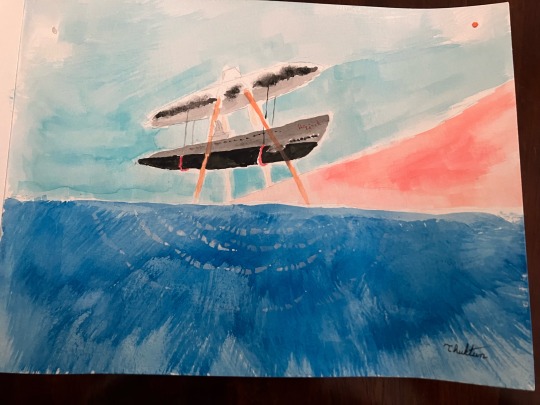
#skipjack#science fiction#sci fi#watercolor#art#painting#submarine#submarines#submarines in space#mars#curiosity rover#space#balao-class
5 notes
·
View notes
Text
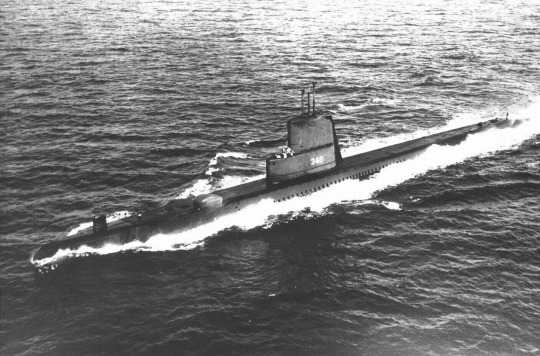
USS Chopper (SS-342) Sometimes when a submarine goes wildly out of control, it sinks to the bottom. Sometimes when a sub goes wildly out of control, it go straight to the surface. When the USS Chopper lost control, it did both. At tremendous speed. https://jalopnik.com/inside-the-absolutely-wild-ride-of-the-uss-chopper-1587554224
9 notes
·
View notes
Text
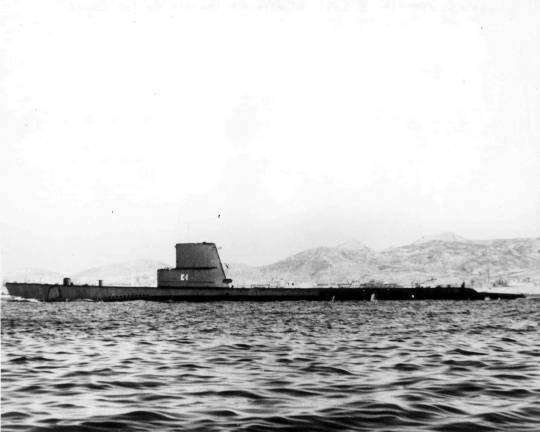
Transferred to Spain, 24 October 1959, renamed Almirante García de los Reyes (E-1); Redesignated (S-31), 15 June 1961, under the new, NATO-style numbering system adopted by the Spanish Navy. Almirante Garcia de los Reyes was the only Spanish submarine in the 1960s
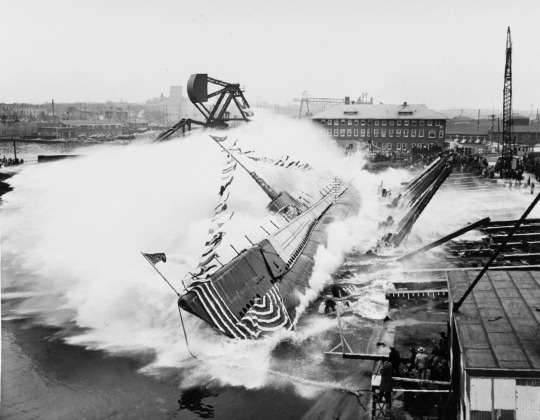
USS KRAKEN (SS-370) being launched at Manitowoc Shipbuilding Co, Manitowoc, Wisconsin. She was sponsored by Mrs. John Z. Anderson (wife of Congressmen Anderson of California).
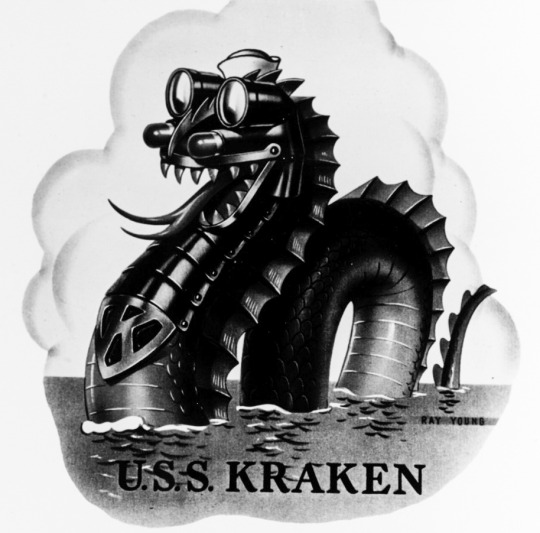
She had a cool name and insignia.
Photographed on April 30, 1944.
U.S. Naval History and Heritage Command: NH 72319, NH 65248-KN
225 notes
·
View notes
Link
In the article "Hallowed Ground: Dr. Dabbs Tours the USS Drum" on The Armory Life, author Will Dabbs, MD, takes readers through a historical exploration of the USS Drum, a Gato-class submarine prominently featured at the Battleship Alabama Memorial Park in Mobile, Alabama. The USS Drum, noted for being the oldest surviving American submarine from World War II, played a significant role during the war, undertaking 14 war patrols and sinking 15 Japanese ships. Dabbs details the cramped and challenging conditions aboard the submarine, highlighting its historical importance and the intense experiences of its crew. The article reflects on the bravery and resilience of its sailors while describing the Drum's combat achievements and eventual preservation as a museum piece following damage from Hurricane Katrina. Dr. Dabbs candidly shares his impressions, painting a vivid picture of submarine warfare and life aboard a vessel that is now a symbol of past naval valor.
#USS Drum#SS-228#World War II#Gato-class submarine#United States Navy#Pacific Theater#Navy Cross#Charles A. Lockwood#Battle of Leyte Gulf#Pearl Harbor#USS Balao#Mobile#Alabama#Battleship Memorial Park#submarine preservation#historical monument#war patrols#sonar systems#Japanese fleet#Silent Service.
0 notes
Text
US Navy Balao-class submarine sinks a Japanese sailing vessel with gunfire circa 1945
20 notes
·
View notes
Text
GB's Development Blog / Masterpost
Just an overview of my projects and their status (for you and me) because... dunno. could be interesting I guess?
Try Series:
Try of Maks (main series comic): fully sketched/prepared. Pages in need of finishing & publishing
Nimbus Try I: Arpeggio of Hurt Steel: Completed
Nimbus Child I: Games of War: Completeted
Nimbus Try II: Ghost Hunt: Completed
Nimbus Try III: Utosia: Currently being published
Nimbus Try IV: Mythological!AU: To be published
Nimbus Try V: Cor!AU: To be published
Nimbus Try VI: Written part finished. Comic fully sketched.
Nimbus Try VII: Ego: To be published
Nimbuy Try VIII: Usurpator: To be published
Nimbus Try IX: Non-existing and Continuous World: Planned as game (visual novel-esque). Script completed. Character sprites sketched. Backgrounds, speech boxes, scene art still needed.
Try X: Nemo: fully sketched
Your Garden of Woe:
Bloody Sakura in a Field of Poppies: To be published
Wings of Ruby: To be published
In Order to Fulfill my Purpose: To be published
Songbird: To be published
The War I Chose to Wage Against the Stars: unfinished
Arpeggio of Blue Steel:
Where Your Core Rests: Kongou x Reader. Completed
Azur Arpeggio: Azur Lane/Arpeggio crossover. Request from Wattpad. Unfinished
Black Swarm: Merpeople AU featuring either Maya and Kongou or the Reader and Kongou. Existence pending
Deep Deep Blue: Maya is stuck in a time loop to save Kongou. unfinished
Murder Can Get You... a Wife?: Kongou x Reader / Kongou & Reader (will probably be readable as both). Unfinished
Other:
Dreamcaught Butterfly: Hollow Knight fanfic born quite literally from a dream, where the Blackwyrm came back to life to be a pain in PK's side. Will probably never be worked on
Character Designs / Redesigns (Crossed out = Finished):
Normal ships:
H41 (J) Barbarossa
H42 (K) Hohenzollern
H43(L) Manfred von Richthofen (converted CV)
H44 (M) Lothar von Richthofen (converted CV)
H40 (I) Hindenburg
H39 (H) Friedrich der Große
Preußen (H-43, L)
Kriegsglück (H-44, M)
Tirpitz
Bismarck
Gneisenau
Scharnhorst
Flugzeugträger A, Graf Zeppelin
Flugzeugträger B, Peter Strasser
Flugzeugträger C
Flugzeugträger D
O Odin
P Wotan
Q Beowulf
Seydlitz/Weser
Lützow/Tallinn
Mainz
Kiel
Thüringen
München
Rostock
Hamburg
Clemenceau
Gascogne
Lion (1910)
Princess Royal
Kirishima (DD)
Kongou (DD)
SS Scharnhorst (Shin'yō)
HMVS Cerberus
Sovetskaya Gruziya
Temeraire (Lion-class BB)
Irbis (name subject to change, Lion-class hybrid battleship)
111 / Kii
797 / Oki
Shinano
Kashino
Hood
Howe
King George V
Ohio (Montana-class)
Maine (Montana-class)
Flandre (Alsace-class)
Impero (Littorio-class)
Roma (Littorio)
Italia / Littorio
Dutch 1047 Battlecruiser Project Ship #1
Dutch 1047 Battlecruiser Project Ship #2
Pollux/Korai Maru/Hoyo
Endracht
De Zeven Provinciën
Carnarias &
Baleares
Lepanto &
España (Littorio class, the Spanish & Italian planned on building variations)
Piorun (loaned to the Polish Navy from the Royal Navy)
Fuji
Hatsuse
Yashima
Shikishima
Asahi
Mikasa
B-65 Kreuzer (Daisen &
Kuro)
SS Gneisenau (Jade)
SS Potsdam (Elbe)
Lütjens
RLP
L20e Alpha (Ägir?)
U-556
Midway
Ark Royal
Royal Oak
Prinz Eitel Friedrich / Noske
Brandenburg
SM U 29
Z1
Vanguard
I-403
I-404
I-405
U-2540 (Wilhelm Bauer)
Undine
Alliance
Cachalot
U-2501
U-190
Salmon
Balao
S-1
U-74
Shenyang/Namikaze
Chungking/Huanghe/HMS Aurora
Irian/Ordzhonikidze
Hsienyang/USS Rodman
Loyang/Benson
USS BLACK
USS Farragut
USS Fletcher
USS Monagahan
Chung Mu/USS Erben
Hamakaze
USS Ringgold
Isokaze
U-181/I-501
Independence (CV-61)
Training ship Amerigo Vespucci
Taihō
Dresden
Kolberg
Graf Spee
Altmark/Uckermark „Uka Maru“
Von der Tann
Moltke
Derfflinger
U-69
Kaiser
König
Gryf
Bougainville
Black Swan
Sonne
Mars Nova
Pluto
Conte di Cavour
Dante Alighieri
Zuikaku
Shōkaku
Kaga
Hashidate
Katori (cruiser)
Ry��jō
Chikuma
Tenryū
Kuma
Yūbari
Yahagi (Chikuma-class)
Amagi
Ashitaka/Takao
Myōkō
Tachibana
Shimakaze
Wakatake
Umikaze
Akizuki
Asashio
Kagerō
Kamikaze
Yashiro/Cheng An (Mikura-class)
Awrora
Diana
Nowik
Molotow
Nürnberg/Admiral Makarow
Swietlana / Krasny Krim
Gangut / Oktyabrskaya Revolutsiya
Noworossijsk/ Giulio Cesare
Moskwa (battlecruiser)
Kiew (dd leader)
Leningrad (dd leader)
Minsk (dd leader)
St. louis
Charleston
Alaska
Guam
Erie
Chester
Helena
Marblehead
Omaha
Constellation (lex class)
Lexington
Arizona
North Carolina
South Carolina
Wyoming
Iowa
Midway
Fusō
Kawachi
Mutsu
Nagato
Aoba
Orion
Strasbourg
Dunkerque
Duke of York
T-22
Nassau
Bayern
Prinz Eugen / Tegetthoff
ZF6 / L'Opiniâtre
Bellerophon
Eritrea
Kongou
Furutaka
Yūdachi (Nightmare of Solomon)
Ilmarinen
Aallokas
Isku
Ahven
Kuore
Lahna
Marat
Thule
Wasa
Drottning Victoria
Nordenskjöld
Wachtmeister
Munin
Gripen (1928)
Lindormen
Niels Juel
Marjata III/Eger
Ula
Uredd
Yavuz Sultan Selim/Goeben
Basra
Barbaros
Yıldırım
Yavuz
Gür
Svalbard
Kronprins Haakon
ORP Nawigator (spy ship)
Yantar
Alerta (Spanish spy ship)
Yuan Wang (specific ship undecided)
Elettra
Ta Kuan
Hai Pao/Tusk
Cochino
Hai Lung
Ukraina, dd (1917)
Starobilsk
Ternopil
Lutsk
Dnipropetrovsk
Mykolaiv
Crocus
Naraku Maru
Matti Matti Maru
Myth ships:
Long Cheng (nur Myth)
Lóng guó
Kantorka (Flugzeugträger I (Imperial German project)
Nachthexe (improved Europa CV configuration)
Jingwei
Qilin
Chi Tu
Ruler
Crest
Turing (ex-Attero)
Hansa
Rhein (Flugzeugträger C)
Mosel (Flugzeugträger D)
Weiße Rose (ex-Geschwister Scholl) (repair ship)
Forgotten Ships:
Awa (Project 13 fast battleship)
Muroto (Project 13 fast battleship)
Tosa (named after bb, project 13)
Amaterasu (improved Taihō, G-15 Project)
HMS Faithful
SMS Fürst Bismarck
Babel
Other:
Nyx
Callisto
Rubyheart
Forestleaf
Cloud Melody
Bronze Hoof
Snowflake
Frost Cobra
Athena
Pallas
Ikra
Lillith
Aquabloom
Ayumi (redesign pending)
Bluestream
Daylight (+ new name)
Nightlight (+ new name)
Gaia
Nightmare Blood
Dark Blood
Lia
Lightwalker
Melody
Metimo
Mia
Chrysós (redesign pending)
Schatten
Sonata
Leafchild
Feanor
Great Four Winged One
Bai Ki
Theia
Mitemo's Butterfly
Latura
Anna Mitemo
various Masks
Eru
(content subject to change)
3 notes
·
View notes
Text

Launched in 1923, the S-44 was one of few “old pigboats” that saw extensive service in WW2 when the US Navy was desperate for Submarines after the onset of Pearl Harbor.
Serving on such boats took extra courage! I find these boats unique in that they were not the more well-known modern Gato or Balao-class boats,
but already had 20 years of service behind them when asked again to serve their country in time of war!.
With the leaks and deficiencies in these older submarines
(e.g., limited depth, speed,
no rear tubes,
and range capability), these boats still nonetheless served with distinction in WW2. S-44 earned two battle stars and has the distinction of being the first US Submarine in WW2 to sink an enemy cruiser -
that of the IJN heavy cruiser Kako in 1942 during the Battle of Savo Island!
But she was also tragically, the only S-Class boat to be lost to enemy action when she was sunk on 7 October 1943, as a result of surface gunfire with the Japanese Destroyer Escort Ishigaki off the Kuril Islands.
She was lost with only 2 survivors out of a complement of 38 crew (Lt.Cdr. Francis Elwood Brown went down with the ship).
Given this unique history, I wanted to build this boat!
I originally wanted to build the resin 1/350 S-Class model by Blue Water Navy but,
found it is very rare (if anyone has one, I am still interested as I collect 1/350 USN WW2 submarines).
With no luck in getting the 1/350 BWN model,
I decided to scratch-build one in 1/72. Given I had more time than usual with Covid19,
I started this project only in June 2020 and expect to finish in a month or so –
a record for my scratch-built projects which can last about a year minimum.
Here are pictures of the model in-progress thus far. It is not yet finished as I STILL have to add the many rivets found on these old boats!!!
The model was based on an old vacuform kit of a generic S-Class boat by the now defunct Combat Models.
However I found the old vacuform kit),
was not accurate in shape nor detailed enough as a start.
So far, the approach was to use the Combat Models as a guide to re vacuform the hull based on new plans I bought.
Methods included thermo forming,
along with styrene,
bass wood,
metal,
photo-etch,
resin casting,
and lots of gizmology parts from the spares box!
There is no major definitive book outlining the details of these old boats!
I relied solely on two grainy photos that exist of her as she exited Philadelphia Naval Shipyard in her last refit in summer 1943.
I also used photos of her near sisters (S-42 to S-46),
to guess at the rest of the details that could not be ascertained in those two old photos...
You will note that the boat had many details that are not symmetrical and aligned such as the flood holes (remember this boat was constructed in 1920!).
This is replicated on the model on purpose based on period photos of her flood hole arrangements.
While I thought a submarine would be relatively easy to scratch build,
I take that back as she has tons of little deck details.
The conning tower alone has about 150 parts itself.
In total, there will be about 400 parts to this “simple” sub.
It is not all scratch…the deck gun is from White Ensign Models
(but with more details added),
and the AA gun is from UM.
The S-44 was the only boat to mount this massive 4”/50 deck gun,
and her near sisters had the smaller 3” guns.
The paint scheme is of utmost challenge as she was simply “all black”.
I do not know how to go about it, but will tackle it one step at a time.
Thus the model represents S-44 after her final refit in June 1943,
and in what she might have looked at the time of her loss near Japan –
an old boat with a more modern conning tower!
This model is a tribute to all the crew on that boat, and those submariners still on “eternal patrol”.









I hope to contribute it and find a home for it one day at some naval museum.
More Pics on FB - Harvey Low
10 notes
·
View notes
Text
World War II
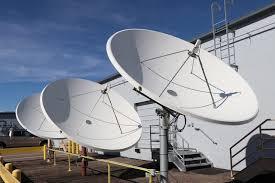
Between World War I and World War II, the world's naval interest in submarines remained strong. The British, French, and Japanese built improved versions, and during this period the United States Navy built its first large, long-range submarine, the Argonaut. Completed in 1928, it was 381 feet long, had a surface displacement of 2,710 tons, was armed with two 6-inch guns, four forward torpedo tubes, and could carry 60 mines. The Argonaut was the largest non-nuclear submarine ever built by the US Navy, and led to the highly successful American Gato and Balao class submarines used in World War II.
In the 1930s, revived Soviet shipyards began mass-producing submarines, especially coastal vessels, to make the Soviet Union a naval power without spending large amounts of money on surface warships. However, while the Soviet program produced a large number of ships, the ships were ill-suited for operation against the German Navy, the crews were poorly trained, and the Soviet bases were mostly blocked by ice.
During World War II, large-scale submarine operations took place in the world's oceans. The most important German submarines in the Atlantic were the Type VIIs, relatively small but effective when properly used. The Type VIICs were 220.25 feet long, had a surface displacement of 769 tons, and were diesel-electrically powered. They had a speed of 17 knots on the surface and 7.5 knots submerged. Their armament consisted of a 90 mm deck gun, various anti-aircraft guns, and five torpedo tubes (four forward and one aft). They carried 14 torpedoes or 14 tube mines. These submarines had a crew of 44 and could achieve a range of 6,500 miles at 12 knots on the surface, although the submarine's gun batteries could continue to operate for just under a day at 4 knots.
4 notes
·
View notes
Text
Op are you in a balao class submarine
beautiful women named 3 torpedoes incoming keep messaging me
3K notes
·
View notes
Text
World War Two
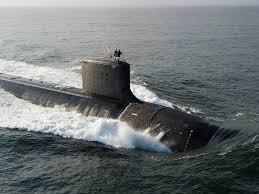
The Argonaut was the largest non-nuclear submarine ever built by the US Navy, and led to the highly successful American Gato and Balao class submarines used in World War II.
The ultimate diesel-electric submarine developed during wartime was the German Type XXI, a 250-foot-long, 1,600-ton boat capable of submerging at 17.5 knots for over an hour, or at 6 knots for two days, or "crawling" at a slow speed for four days. These submarines were equipped with snorkels (see below) so they did not have to fully surface to recharge their batteries after being deployed underwater. The Type XXI had an operating depth of 269 meters, more than twice the normal depth at the time, and was armed with four 33 mm guns and six bow torpedo tubes (capable of carrying 23 torpedoes). These features made all previous submarines obsolete. If the war had continued beyond the spring of 1945, existing Allied anti-submarine forces would have had serious problems with these boats.
A final wartime German design of particular interest was the Walther turbine propulsion system. Because combustion requires oxygen, previously it was not possible to use steam turbines or diesel engines while a submarine was submerged and lacking air. German scientist Helmut Walther developed a turbine propulsion system that used oxygen produced by hydrogen peroxide to run a turbine underwater.
0 notes
Text
A notable German submarine development
World War 2 was the snorkel device (anglicized by the US Navy to "snorkel"). The invention was attributed to Dutch officer Lieutenant Jan J. Wichers, who in 1933 proposed the idea of a breathing tube to supply fresh air to the submarine's diesel engines while traveling underwater. The Dutch Navy began using snorkels in 1936, and some fell into German hands in 1940. With the introduction of radar to detect surfaced submarines, Germany equipped hundreds of submarines with snorkels to allow their diesel engines to operate at periscope depth (to recharge the batteries for underwater propulsion). This increased the chances of detection by radar-equipped ships and Allied aircraft.
During the Pacific War, the Japanese military deployed a large number of submarines of various sizes and types, including carrier submarines, midget submarines, and "manned torpedo" submarines mounted on larger submarines. The Japanese I-201 class submarines were fast diesel-powered submarines, 259 feet long, displacing 1,291 tons, and capable of 15 knots on the surface. Underwater, large batteries and electric motors could power the vessels at a speed of 19 knots for almost an hour. Each boat was equipped with two 25 mm guns and four forward torpedo tubes, carrying ten torpedoes.
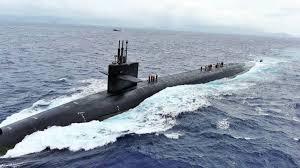
The highly successful U.S. submarine campaign in the Pacific War was fought primarily with Gato and Balao class submarines. She was approximately 311.5 feet long, displaced 1,525 tons, and was powered by diesel-electric engines capable of a speed of 20 knots on the surface and 9 knots submerged. The main difference between the two designs was that the Gato class boats had an operating depth of 300 ft, while the Balao boats had an operating depth of 400 ft. These submarines carried a crew of 65 to 70 men and were equipped with one or two 5-inch deck guns as well as smaller anti-aircraft weapons, ten torpedo tubes (six forward and four aft) and carried 24 torpedoes.
0 notes
Text
A notable German submarine development

World War 2 was the snorkel device (anglicized by the US Navy to "snorkel"). The invention was attributed to Dutch officer Lieutenant Jan J. Wichers, who in 1933 proposed the idea of a breathing tube to supply fresh air to the submarine's diesel engines while traveling underwater. The Dutch Navy began using snorkels in 1936, and some fell into German hands in 1940. With the introduction of radar to detect surfaced submarines, Germany equipped hundreds of submarines with snorkels to allow their diesel engines to operate at periscope depth (to recharge the batteries for underwater propulsion). This increased the chances of detection by radar-equipped ships and Allied aircraft.
During the Pacific War, the Japanese military deployed a large number of submarines of various sizes and types, including carrier submarines, midget submarines, and "manned torpedo" submarines mounted on larger submarines. The Japanese I-201 class submarines were fast diesel-powered submarines, 259 feet long, displacing 1,291 tons, and capable of 15 knots on the surface. Underwater, large batteries and electric motors could power the vessels at a speed of 19 knots for almost an hour. Each boat was equipped with two 25 mm guns and four forward torpedo tubes, carrying ten torpedoes.
The highly successful U.S. submarine campaign in the Pacific War was fought primarily with Gato and Balao class submarines. She was approximately 311.5 feet long, displaced 1,525 tons, and was powered by diesel-electric engines capable of a speed of 20 knots on the surface and 9 knots submerged. The main difference between the two designs was that the Gato class boats had an operating depth of 300 ft, while the Balao boats had an operating depth of 400 ft. These submarines carried a crew of 65 to 70 men and were equipped with one or two 5-inch deck guns as well as smaller anti-aircraft weapons, ten torpedo tubes (six forward and four aft) and carried 24 torpedoes.
0 notes
Text
A notable German submarine development

World War 2 was the snorkel device (anglicized by the US Navy to "snorkel"). The invention was attributed to Dutch officer Lieutenant Jan J. Wichers, who in 1933 proposed the idea of a breathing tube to supply fresh air to the submarine's diesel engines while traveling underwater. The Dutch Navy began using snorkels in 1936, and some fell into German hands in 1940. With the introduction of radar to detect surfaced submarines, Germany equipped hundreds of submarines with snorkels to allow their diesel engines to operate at periscope depth (to recharge the batteries for underwater propulsion). This increased the chances of detection by radar-equipped ships and Allied aircraft.
During the Pacific War, the Japanese military deployed a large number of submarines of various sizes and types, including carrier submarines, midget submarines, and "manned torpedo" submarines mounted on larger submarines. The Japanese I-201 class submarines were fast diesel-powered submarines, 259 feet long, displacing 1,291 tons, and capable of 15 knots on the surface. Underwater, large batteries and electric motors could power the vessels at a speed of 19 knots for almost an hour. Each boat was equipped with two 25 mm guns and four forward torpedo tubes, carrying ten torpedoes.
The highly successful U.S. submarine campaign in the Pacific War was fought primarily with Gato and Balao class submarines. She was approximately 311.5 feet long, displaced 1,525 tons, and was powered by diesel-electric engines capable of a speed of 20 knots on the surface and 9 knots submerged. The main difference between the two designs was that the Gato class boats had an operating depth of 300 ft, while the Balao boats had an operating depth of 400 ft. These submarines carried a crew of 65 to 70 men and were equipped with one or two 5-inch deck guns as well as smaller anti-aircraft weapons, ten torpedo tubes (six forward and four aft) and carried 24 torpedoes.
0 notes
Text
A notable German submarine development

World War 2 was the snorkel device (anglicized by the US Navy to "snorkel"). The invention was attributed to Dutch officer Lieutenant Jan J. Wichers, who in 1933 proposed the idea of a breathing tube to supply fresh air to the submarine's diesel engines while traveling underwater. The Dutch Navy began using snorkels in 1936, and some fell into German hands in 1940. With the introduction of radar to detect surfaced submarines, Germany equipped hundreds of submarines with snorkels to allow their diesel engines to operate at periscope depth (to recharge the batteries for underwater propulsion). This increased the chances of detection by radar-equipped ships and Allied aircraft.
During the Pacific War, the Japanese military deployed a large number of submarines of various sizes and types, including carrier submarines, midget submarines, and "manned torpedo" submarines mounted on larger submarines. The Japanese I-201 class submarines were fast diesel-powered submarines, 259 feet long, displacing 1,291 tons, and capable of 15 knots on the surface. Underwater, large batteries and electric motors could power the vessels at a speed of 19 knots for almost an hour. Each boat was equipped with two 25 mm guns and four forward torpedo tubes, carrying ten torpedoes.
The highly successful U.S. submarine campaign in the Pacific War was fought primarily with Gato and Balao class submarines. She was approximately 311.5 feet long, displaced 1,525 tons, and was powered by diesel-electric engines capable of a speed of 20 knots on the surface and 9 knots submerged. The main difference between the two designs was that the Gato class boats had an operating depth of 300 ft, while the Balao boats had an operating depth of 400 ft. These submarines carried a crew of 65 to 70 men and were equipped with one or two 5-inch deck guns as well as smaller anti-aircraft weapons, ten torpedo tubes (six forward and four aft) and carried 24 torpedoes.
0 notes
Text
A notable German submarine development

World War 2 was the snorkel device (anglicized by the US Navy to "snorkel"). The invention was attributed to Dutch officer Lieutenant Jan J. Wichers, who in 1933 proposed the idea of a breathing tube to supply fresh air to the submarine's diesel engines while traveling underwater. The Dutch Navy began using snorkels in 1936, and some fell into German hands in 1940. With the introduction of radar to detect surfaced submarines, Germany equipped hundreds of submarines with snorkels to allow their diesel engines to operate at periscope depth (to recharge the batteries for underwater propulsion). This increased the chances of detection by radar-equipped ships and Allied aircraft.
During the Pacific War, the Japanese military deployed a large number of submarines of various sizes and types, including carrier submarines, midget submarines, and "manned torpedo" submarines mounted on larger submarines. The Japanese I-201 class submarines were fast diesel-powered submarines, 259 feet long, displacing 1,291 tons, and capable of 15 knots on the surface. Underwater, large batteries and electric motors could power the vessels at a speed of 19 knots for almost an hour. Each boat was equipped with two 25 mm guns and four forward torpedo tubes, carrying ten torpedoes.
The highly successful U.S. submarine campaign in the Pacific War was fought primarily with Gato and Balao class submarines. She was approximately 311.5 feet long, displaced 1,525 tons, and was powered by diesel-electric engines capable of a speed of 20 knots on the surface and 9 knots submerged. The main difference between the two designs was that the Gato class boats had an operating depth of 300 ft, while the Balao boats had an operating depth of 400 ft. These submarines carried a crew of 65 to 70 men and were equipped with one or two 5-inch deck guns as well as smaller anti-aircraft weapons, ten torpedo tubes (six forward and four aft) and carried 24 torpedoes.
0 notes